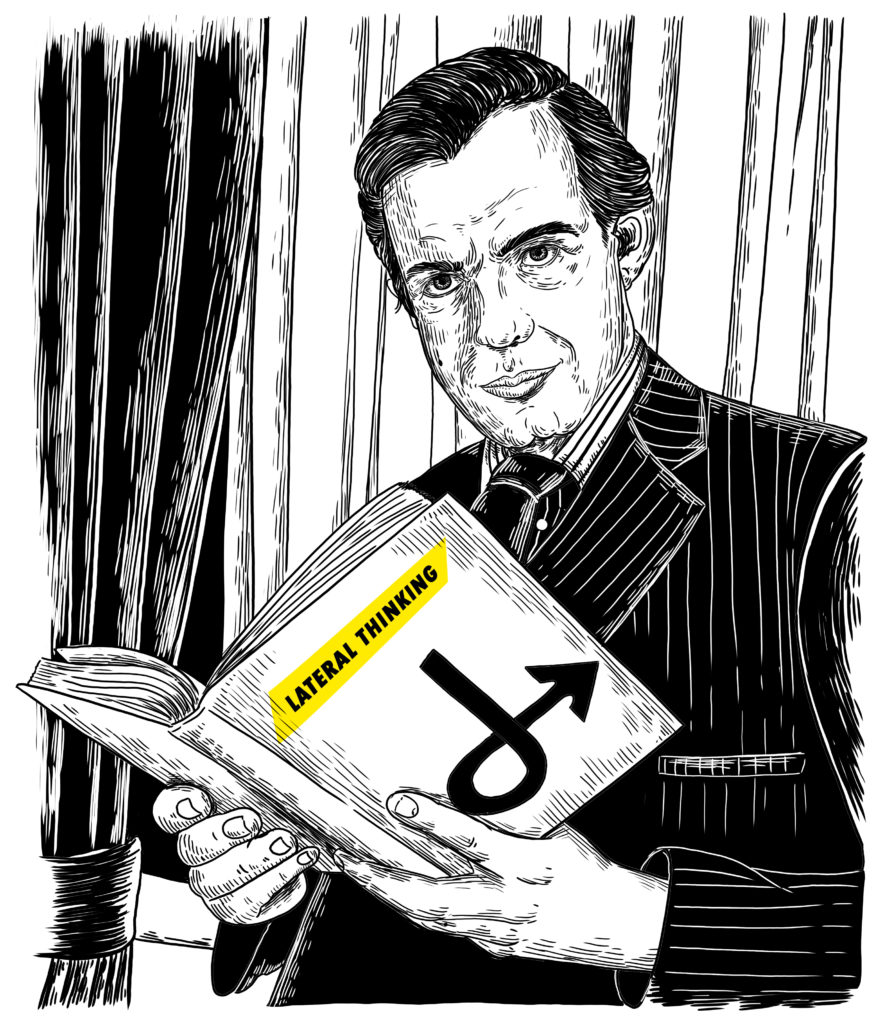Cecilia Hempstock had a big problem.
Her dad Karl, a British merchant, ran into terrible financial trouble.
Mr. Karl Hempstock’s business had taken a turn for the worse, and he owed money to a Mr. James James, one of London’s loan sharks.
(Never trust anyone with two first names.)
The large loan had come due, and paying it now would surely be Mr. Hempstock’s ruin.
During this period in Britain, not repaying your loans was a criminal act. And, it didn’t take much to build a case to get one sent to jail. Moneylenders, as they were called, enjoyed this fact and used it to extort all kinds of things from their debtors. It was nasty.
Cecilia became an essential staple in Mr. Hempstock’s business two years before this crisis. Her mother suddenly passed away due to illness. Her mother was a beautiful, tall Italian woman. She gave Cecilia the nickname Cece after her grandmother.
Understanding the gravity of the situation, Cece suggested her father invite Mr. James over to enjoy high tea and discuss getting more time to repay the loan.
Later that week, Mr. James arrived in his signature black cape and top hat.
He had long curly whiskers, the kind you see on the master of ceremonies at a circus. He had an ugly scar below his right eye that didn’t improve his ugly mug. He was carrying his infamous money bag. He took it wherever he went, hoping to drop off or pick up cash.
The Hempstocks served tea in their Italian-style garden designed by the late Mrs. Hempstock.
She took meticulous care of the garden while helping her husband run their floral business. She was fond of that garden as it always brought them good luck.
After tea, Karl explained their predicament and appealed to Mr. James.
James listened as he finished his cup-o-char (dark tea with milk).
He leaned back and said, “Well, Mr. Hempstock, today is your lucky day. I am feeling rather generous. I have the perfect solution for you.”
“Oh, do you, sir?” said Karl.
As hostess to the occasion, Cecilia sat down to listen to the proposal.
“Well, Mr. Hempstock, I believe your stunning young daughter is an excellent new business partner,” complimented Mr. James.
Cece was gifted with her mother’s stunning good looks and brains. She had similar dark features. She had long black hair, and she towered over most men. Mr. James, who was no spring chicken, fancied her and decided this was the time to make his move.
“If I may have Ms. Hempstock’s hand as my life partner, I would immediately cancel your debt, sir,” said Mr. James with a sly grin. “And, we’ll be connected forever as a family. Ha! Yes, wonderful. No?”
Cece and Karl were horrified by the indecent proposal.
“How dare you, sir!” Shouted Mr. Hempstock.
Cece was dumbstruck.
Mr. James crossed his arms and leaned back against the chair so much he fell back onto the pebble-strewn garden floor – which sparked an idea.
“Look. I don’t really have to offer any gifts here. I have rights, as you know,” said Mr. James after getting up from the embarrassing fall and dusting himself off. “Ha. How about we let fate decide, eh?”
Mr. James explains how he would place two pebbles in his money bag. One black. One white.
Cece would then reach into the bag and blindly select one. If she pulled out a white pebble, her father’s debt would be wiped clean, and she would be spared the joy of marrying Mr. James. A black pebble would also wipe the debt, but with the extra bonus – for Mr. James – of gaining the companionship of a new beauty for life.
Mr. Hempstock wasn’t happy about this idea. Still, after receiving a subtle nod of approval from his daughter, he reluctantly agreed.
“Ha! Good choice, my floral friend. Good choice!” Shouted Mr. James.
He then stooped down to pick up two pebbles from the garden floor.
Filled with fright and watching him like a hawk, Cece noticed he picked up two black pebbles and quickly placed them in his trusty money bag.
“Now, my dear, let’s see what the gods desire,” said Mr. James as he motioned her to place her hand in the bag and choose a pebble.

image: ceoplaybook.co
Intermission…
So, let’s pause for a moment.
Oof.
That’s a challenging situation, don’t you think?
Suppose you are this unfortunate woman. What would you do?
Take a clean sheet of paper and write down what you think she should do.
How would you advise her?
(Don’t read ahead! LOL)
“Studies have shown that 90% of error in thinking is due to error in perception. If you can change your perception, you can change your emotion and this can lead to new ideas. Logic will never change emotion or perception.” — Edward de Bono
Back to the story…
Cece reached into the bag and pulled out one of the pebbles as Mr. James required.
She dropped it to the ground clumsily without even looking at the fateful rock.
“Oh my gosh, I am ever so clumsy,” she said, looking at Mr. James and her father. “But, that’s alright. You just need to look at the color of the remaining one to tell which one I took.”
And, just like that, an impossible problem was solved.
Lateral vs. Vertical Thinking
So, what was on your advice list?
Did you suggest Cece call out Mr. James and his attempted sleight of hand?
Or perhaps you suggested she push back on the scoundrel and say, “I am no object of collateral to be traded for a man’s debt!” And not choose a pebble at all.
Or maybe you figured it’s old England, and the lady should play the game of the time and sacrifice herself for her father.
These are all logical –except for the last one–options.
Unfortunately, not one gets her family to the right outcome — a get out of jail free card and no debt.
But, here is the thing. You and I had the same set of ideas on our advice list.
(Maybe you were as clever as Cece.)
That’s because we all think through problems one way.
We take a step-by-step approach to solving problems. It’s what we are taught in school. Our parents burn it in, too.
This is known as Vertical Thinking.
What Cece did was something different.
Since the remaining pebble in the bag is black, it has to be assumed she had taken the white pebble. There was no way the moneylender was going to admit to his shenanigans.
While we vertical thinkers were focused on the pebble removed from the bag. Cece had her mind trained on the pebble left in the bag.
Cece used Lateral Thinking.
She explored different ways of looking at the problem rather than being boxed into just the most promising or logical ones.
The Hempstock Story is an adaptation of Edward de Bono’s Pebble Story, a powerful visualization in his book, “The Use of Lateral Thinking.”
More about de Bono is in the deep dive section at the end of the article. But, here is his take on explaining the difference between Vertical and Lateral thinking:
Just as water flows down slopes, settles in hollows, and is confined to riverbeds, so vertical thinking flows along the most probable paths and by its very flow increases the probability of those paths for the future.
If vertical thinking is high probability thinking, then lateral thinking is low probability thinking. New channels are deliberately cut to alter the flow of the water. The old channels are dammed up in the hope that the water will seek out and take to new and better flow patterns.
Sometimes the water is even sucked upwards in an unnatural fashion. When the low-probability line of thought leads to a compelling new idea, there is a ‘eureka moment’, and at once, the low-probability approach acquires the highest probability. It is when the water sucked upward with difficulty forms a siphon and flows freely at once…
This moment is always the aim of lateral thinking.
Lateral thinking requires us to drop the logical view of a situation and reconstruct it using new frames and tools.
But, how do we do that?
Ed de Bono developed an entirely new way to think about problems and solutions. These techniques have been taught to some of the world’s largest corporations, prestigious universities, and prominent leaders.
Here are four techniques that he swears by…
1. Challenge
Why do restaurants have a reservation system? Why do coffee mugs have a handle? Why is a candle romantic? Asking why something is true is a way to challenge an idea. The Challenge technique is challenging because we often accept the way things are because it’s easier. But, finding new ideas requires challenging the status quo. If you run into a problem, start by asking why it can’t be done another way.
Here is de Bono:
Challenge is never an attack. Challenge says this is an excellent idea, maybe the best idea, perhaps the only idea. But for the moment, I’m going to put a block on it and, as a result, start looking elsewhere.
Let me give you an example.
In 1970 I was doing work for Shell Oil in London, and I said, “When you drill an oil well, you drill an oil well straight down and have done so for eight years,” no problem, very satisfactory, works well. I said, “Let’s challenge that. Instead of drilling the well straight down, why not go down to the oil seam and go horizontally?” They said, “We can’t do that. The drill won’t go around the corner.” I said, “Yes, it will. If you use a hydraulic head, you pull it around.”
Today, almost every oil well is drilled like that because you get between six and three times as much oil from this oil well as from that old oil well.
2. Concept Extraction
Sometimes when you have a problem, it’s not the problem per se you are solving but the underlying, unspoken problem that is the target. Concept Extraction is about peeling the onion until you get to the raw essence of the problem you’re trying to solve. We don’t always see it readily because we are too hyperfocused on the apparent issue. In other words, an idea is really just carrying out a concept. So, getting to the concept is critical.
Ed de Bono’s idea for determining what a small town should do about commuters who take up precious parking for residents is a blueprint.
For example here, the mayor of a small town here in Australia said:
“We’ve got a problem with commuters. They drive into the town. You’ve got cars parked there all day. No residents can park to shop. Should we put in parking meters? That’s expensive to install and maintain.”
What is the concept behind this?
I said, “What’s the concept?” The concept is to allow people to realize that their parking is limited. I said, “Well, you could do that more simply. You can park anywhere you like, for as long as you like, provided you leave your headlights full on.”
Now, you’re not going to leave your car there for one minute longer than you need to because you’ll run your battery flat.
So certain parts of town, you just have a notice saying only headlight parking here.

Edward de Bono. Image: ceoplaybook.co
3. Provocation
You provoke by saying something you know is wrong to generate new ideas. One way to do this is to force yourself (or your team) to generate 10 ideas (some really dumb) to solve the problem. Just the process of writing them down could lead to the best solution. The key to DeBono’s approach is movement.
The provocation must be accompanied by wishful thinking, exaggeration, reversals, escape, distortion, or arising. You create a list of outlandish ideas to move thinking forward.
Imagine Steve Jobs saying, “What if you had 1000 of your favorite songs in your pocket?”
The following idea came from de Bono’s trained mind:
One time I was talking to the California Ecology Department, about 500 people, and they said:
“We have a problem with reverse river flow. A factory puts out pollution, people downstream suffer.”
So as a provocation, I said, “Put the factory downstream of itself.”
Sounds pretty impossible. How can we be upstream and downstream simultaneously?
From that question comes a very simple idea: usually, you take in your water and put out your pollution. So, we legislate that your input must always be downstream of your own output if you build a factor on the river. So you’re the first to get your pollution.
That is now legislation in 13 countries around the world.
Very obvious. Take more care in what you put out because you will be the first to use it.
[Read: 5 Books That Will Help You Think Like Charlie Munger.]
4.Use Chance / Randomization
This technique is random. Yup. It simply calls for you to randomly associate an object or a noun with the subject at hand. For instance, suppose you are trying to develop a new sales technique. Open the dictionary and randomly choose nouns to connect them to the problem.
Here is de Bono explaining the approach:
How can it possibly work if there’s any word in any subject?
But in a patterning system, it does work. One of my trainers in South Africa set up a workshop one afternoon for a steel company, ISCOR. Just using this technique, they generated 21,000 new ideas in one afternoon.
All these processes can be learned, applied, and used formally and deliberately.
There’s no magic. There’s no mysteriousness about them.
There is no way to escape impossible problems on the entrepreneurial journey.
Often, the solution lies in changing our perception of the problem. As de Bono, the father of the best tool for the job, says, “studies have shown that 90% of error in thinking is due to error in perception. If you can change your perception, you can change your emotion, leading to new ideas. Logic will never change emotion or perception.”
Use the four techniques above to power you through the impossible.
[More on Edward de Bono]
“The simple process of focusing on things that are normally taken for granted is a powerful source of creativity.” – de Bono
Edward de Bono’s Biography
3 of the 60+ books published by DeBono:
Lateral Thinking: Creativity Step by Step
Some recent examples (circa 2022) of Lateral Thinking:
Nick Konos and the Alinea Group
Lateral Thinking with Withered Technology
Innovation at Nintendo by David Epstein


